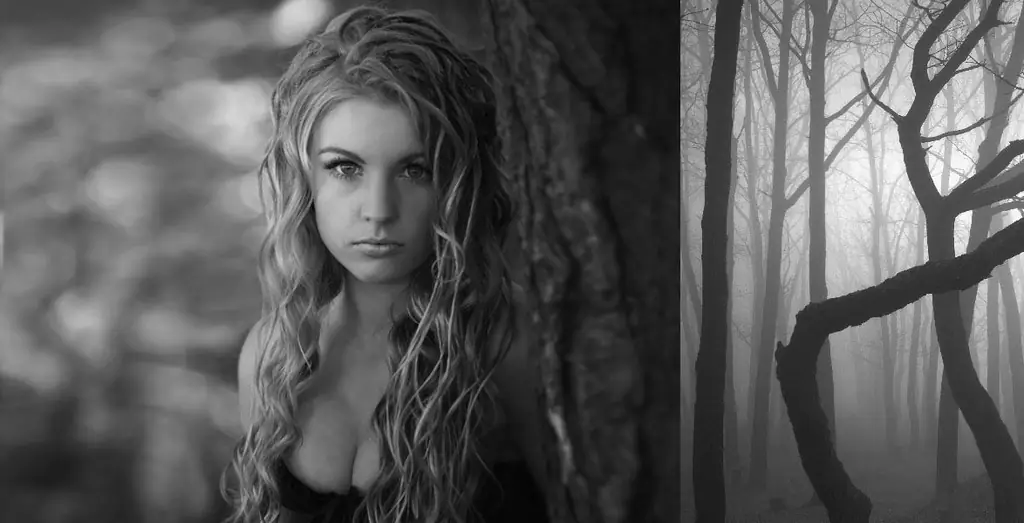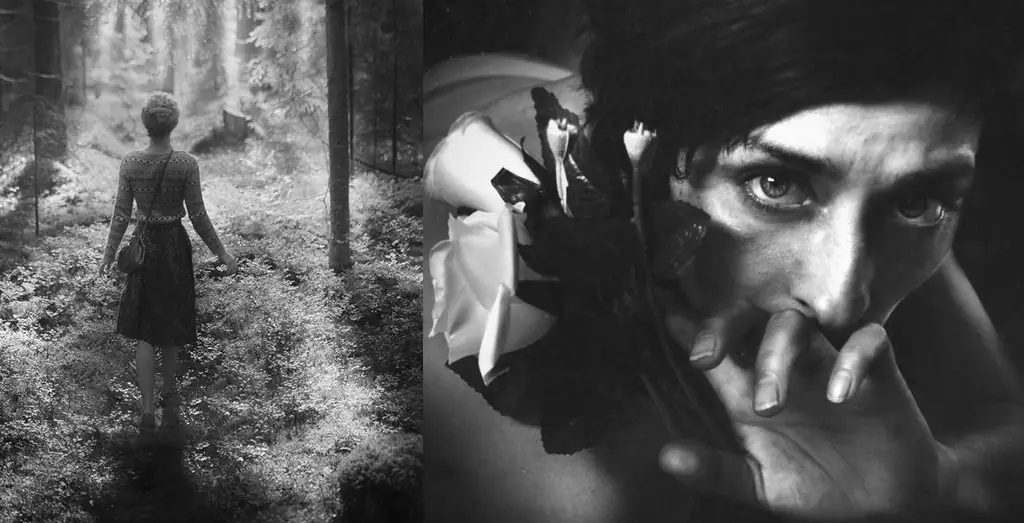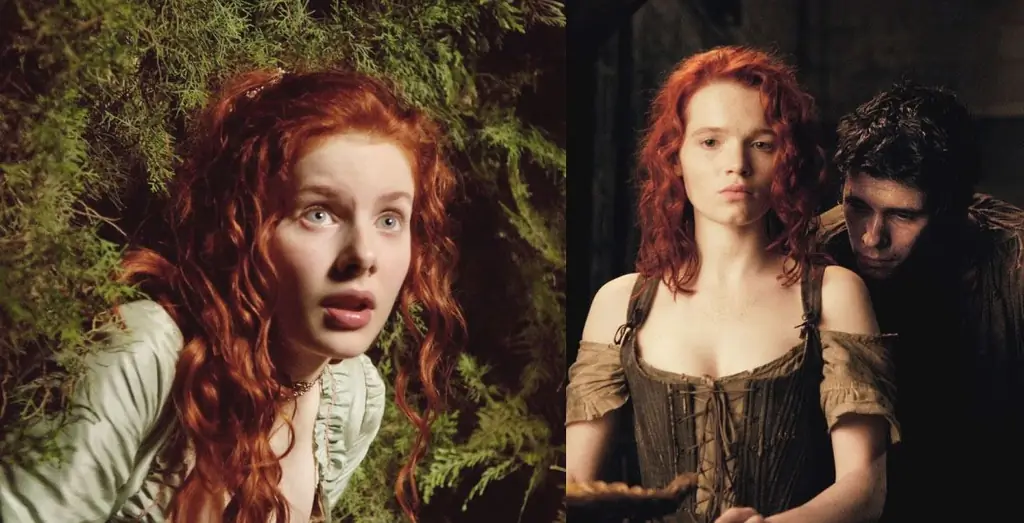- Author Adrian Jeff [email protected].
- Public 2023-12-17 05:06.
- Last modified 2025-01-24 14:09.
Victim of a crime. Murderous scenario
The reasons and conditions conducive to the formation of the victim complex were formed at the dawn of human life, in the primitive flock, and they still operate, even in the conditions of a new modern landscape.
Modern criminology has long been trying to answer the following questions:
-Who is the victim of the crime and why?
-What is the role of the victim in the mechanism of the crime?
As we see today, the number of crimes is not decreasing at all, and the victim is still the victim. As they say, things are still there!
To solve the problem of victimization, a whole science about the victim of a crime has been created - victimology (from Latin victim - a living being sacrificed to God, sacrifice and Greek logos - word, doctrine). In a number of states, victimological communities have formed, and the World Society of Victimologists was even established. Bookstore shelves are full of covers on how to protect yourself, your family, your home and your property from criminal encroachments. But the psychology of the victim of a crime is never revealed in them.
Why do some people become victims of crime while others do not? This question is answered by the System-Vector Psychology of Yuri Burlan, since it distinguishes the type of people who, by their nature, are prone to victimization and in whom, under certain conditions, a victimological complex is formed. This complex explains the reason for the seemingly inexplicable phenomenon, when one and the same person becomes a victim of crimes all the time: either his wallet is taken from him, then the car knocks him down, then he is attacked in a dark alley.

For the first time, systemic vector psychology gives clear recommendations on how to stop provoking crimes against oneself. Distinguishing the concepts of natural and situational victimization, System-Vector Psychology opens up new horizons for research by forensic scientists, as well as whole areas of practical application for workers in this area.
Was the victimology complex set from birth?
The physical body of each person is the same in its anatomical structure, taking into account the peculiarities of separation by gender. Sigmund Freud found that many actions, in the implementation of which a person is not aware of, are meaningless and cannot be explained by the action of drives.
The primary desire of each person is to preserve their integrity: eat, drink, breathe, sleep, plus maintain body temperature. System-vector psychology divides all the properties of a person's character into eight types (vectors). Each vector is characterized by its own type of thinking, a set of properties and desires. In their totality, these desires are combined into an individual "I".
All living things strive to preserve their life, the integrity of their bodies, avoiding death by all means. But only in the visual vector from birth is the fear of death, which has a special meaning-function and is the basis for the visual artist to perform his archetypal task. Fear of death, which originated from the root fear of being eaten (a predator in girls, a cannibal in boys). It is precisely this state that carries an undeveloped visual vector, in conjunction with the skin vector with masochistic tendencies, this becomes the cause of the victimological scenario.
And today, visual children, starting from three to six years old, have a particularly vivid fear of death, for the first time comprehension, emotional experience of the phenomenon of death appears. Concerned about them, they are more likely than others to ask these questions: “Will everyone have to die? I will die? And mom and dad, will they die too? It is unbearable for them to lose a favorite toy or see the death of a pet, because the child creates a close emotional connection with them, animating them and talking to them. Looking ahead, let's reassure the parents: if a child with a visual vector fosters compassion, a sense of empathy, this will help him overcome fear and not become a potential victim in the future. When a child brings fear for himself outward, he is transformed into fear for another person, compassion for others, empathy, love appears.
In practice, there was a case when a skin-visual woman with a victimological complex lived with an anal sadist, who constantly strangled her and brutally beat her. She explained that she was afraid of him, lived in constant fear for her life, new and new pictures of strangulation were born in her head, which were systematically embodied in reality. It was impossible to understand why she continues to live with this person, what connects her with him? Yuri Burlan's System-Vector Psychology provides a clue to this behavior.
The victimological scenario develops in the case when the visual vector does not pass from the state of "fear" to the state of "love". Fear, in this case, remains the only filling of visual desire, of the entire emotional amplitude. There is an emotional buildup in fear - without realizing it, we suddenly run at night through a forest plantation in the most abandoned area of the city.

It also reveals the secret of the "Stockholm Syndrome", when, under the influence of a strong fear of death, hostages begin to sympathize with their captors, justify their actions and, ultimately, identify with them, adopting their ideas and considering their victim necessary to achieve a "common" goal. The essence of what is happening is that the undeveloped spectators who were held hostage unconsciously assume the role of the victim, swinging in a state of fear, filling with it.
Depending on the amount of fear, the spectator can behave victimized in certain situations. A complex is a constant state of an undeveloped spectator or a spectator. The less developed and realized vision, the more often and deeper a person falls into victim states. With a developed visual vector, no matter what happens, the victim complex does not develop. An exception is a state of over-stress, when victimization can manifest itself.
In the modern world, skin-visual men and women with an undeveloped, that is, not emerging from a state of fear, visual vector are always potential victims.
Formation of a victimological complex in skin-visual boys
The reasons and conditions conducive to the formation of the victim complex were formed at the dawn of human life, in the primitive flock, and they still operate, even in the conditions of a new modern landscape.
Cannibalism was practiced in primitive society, which, however, was strictly regulated: exclusively dermal-visual boys were sacrificed. The olfactory person, the primitive “shaman of the pack”, identified the dermal-visual boy among the total number of newborns by smell. And, since then he could not bring any benefit to the flock, he was "sacrificed", giving to be eaten by an oral cannibal. Later, the primitive flock broke away from the animal level: through the efforts of the visual-skin female, a cultural ban on cannibalism was imposed, humanity for the first time got a sense of the value of human life (read more about this in the article "Promotion of culture to the masses or Antisex and Anti-killing") However, as before, due to its properties, the skin-visual male could not become either a warrior or a hunter. Those without archetypeindividuals unable to adapt the landscape did not survive, as such, until the end of the historical phase of human development.
And only with the transition of humanity to a new, skin phase of development, where the skin standardized law guarantees the right to life for everyone, visual humanism finally elevated the value of any human life to an absolute, and the consumer society lives in full prosperity and is able to provide all life without exception, skin the visual male first began to massively survive. Lacking an established "male" archetype, such men adapt for themselves the traditionally female spheres of life: they can be seen mainly on the stage of theaters and on TV screens, today they are becoming the most popular actors, singers, stylists, etc. This special type of men is now commonly referred to as metrosexuals, although they are inherently 100% men. Underdeveloped skin-visual boys are potential victims of a cannibal,they are eaten by him in the modern world. Being eaten by a cannibal is their root fear in sight. Homosexuals choose this particular man as their victims, because he is a victim.
I will give a small example from practice in a criminal case, where an unrealized dermato-visual man aged 37 years passes as a victim. He has a stable average business income. For the species, he cohabits with the urethral-muscular lady he hates. In the evenings he has fun in a nightclub and one day he meets four guys 23-25 years old there. He buys alcohol for them, then gets into their car, invites one of the guys to have a sexual relationship with him. In response, the whole group beats him severely and drives away, leaving him lying on the side of the road.
For those who know the basics of System-Vector Psychology, it is obvious that, following the victimological scenario, this skin-visual man himself provoked a crime against himself.
Formation of a victimological complex in skin-visual girls
In primitive society, she had the archetypal role of day guard of the pack. With her especially developed keen eyesight, she noticed the danger (of an approaching leopard), thanks to the innate fear of death, she was afraid for her life, screamed in horror because of the fear of being eaten by a predator, threw out the pheromones of fear out and thereby warned the flock of danger.
The same females, whose properties were not sufficiently developed, posed a serious threat to the safety of the flock: such a day guard could notice the threat too late, and the flock, at the last moment darting off the spot, left it to the predator, gaining extra time for itself. retreat. I didn't notice the leopard - I ended up in its teeth.
On a complicated landscape, this function, of course, is not in demand, but such a scenario has been modified in a certain way throughout the history of mankind, has evolved into a polished scenario of victimization. One way or another, society got rid of the day guards who could fail at the wrong time. If there was no harvest, then to appease the gods, they sacrificed it. Epidemics of the bubonic plague and cholera - again she was to blame, she went to the stake like a witch. An undeveloped skin-visual female always perished under this well-developed victimization program, whatever the external reason for this.
A skin-visual female in a state of "fear" is always a potential victim of crime. Her fear becomes a bait for those vectors, which are set by nature to rid the flock of victims.

Until now, we all subconsciously "read" the state of fear at the level of pheromones, and each of us unmistakably determines that a person is in a state of fear. We can also see this property by observing the behavior of yard dogs, which bark only at those who are afraid of them.
An undeveloped skin-visual female has a need to feel fear, so her behavior is aimed at swinging more strongly in him, this is accompanied by the release of pheromones and the smell of fear. Following an archetypal scenario, she runs to fill with fear into a dark alley, where a serial maniac calculates her by smell. Remaining in fear, undeveloped, she behaves in a certain way, always becomes a victim of rape (muscle, anal, olfactory) or a victim of crime. She has her own proven program with each of the pack - hence the various types of crimes.
In a developed state, the skin-visual female can also experience an animal fear of death, but only in a state of super stress. At other times, this fear is completely transformed into a state of "love".
There is always feedback from the victim to the offender and the offender to the victim. This is a connection at an unconscious level, one does not exist without the other. It is possible to understand this precisely and clearly only if we consider everything in three dimensions, for example, through the connection of the visual vector with the other seven vectors, and never separately.
To bring your fear out means to stop being a victim, it means to realize your specific role, your desires outside, for others, and not for yourself. And love will replace fear!






